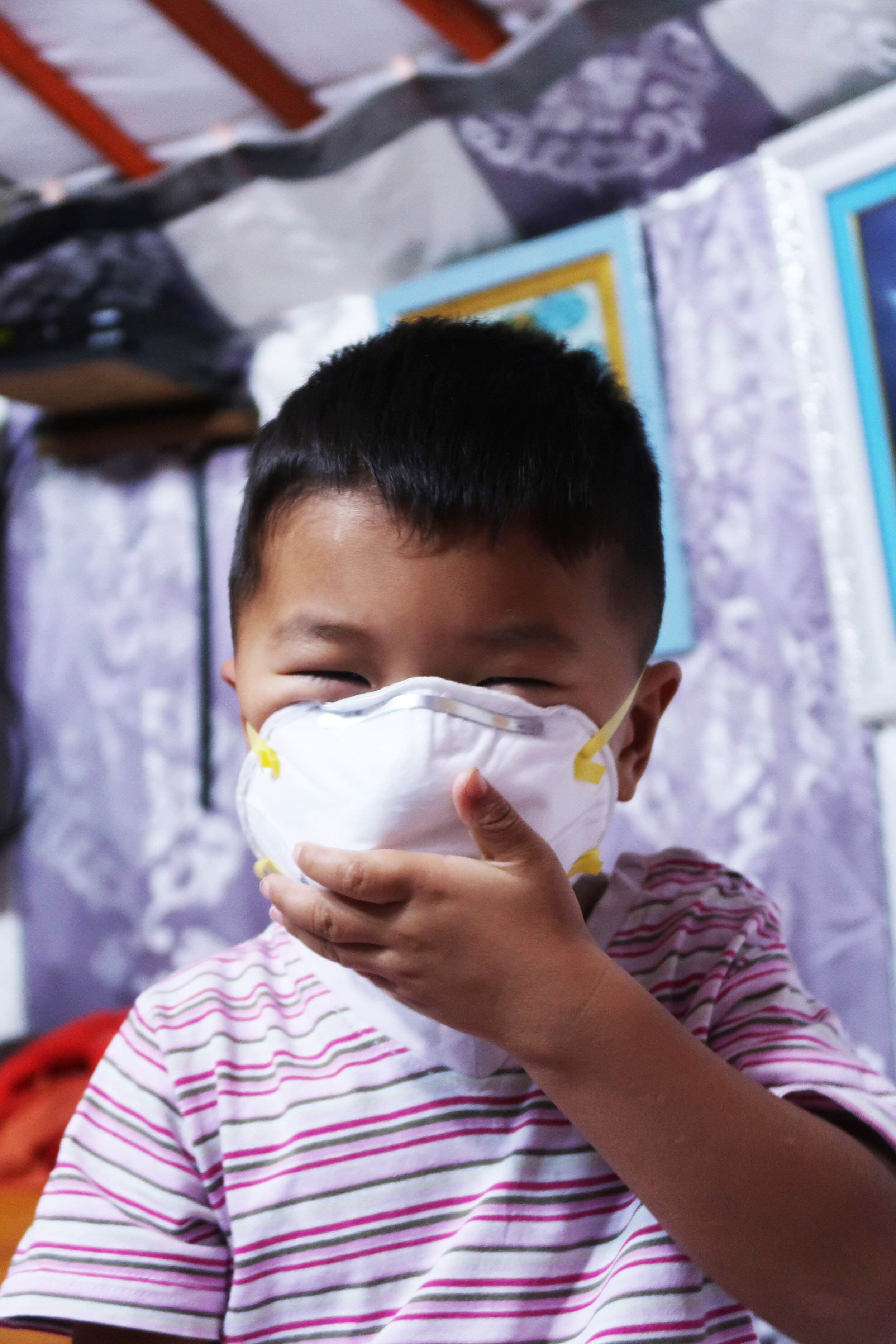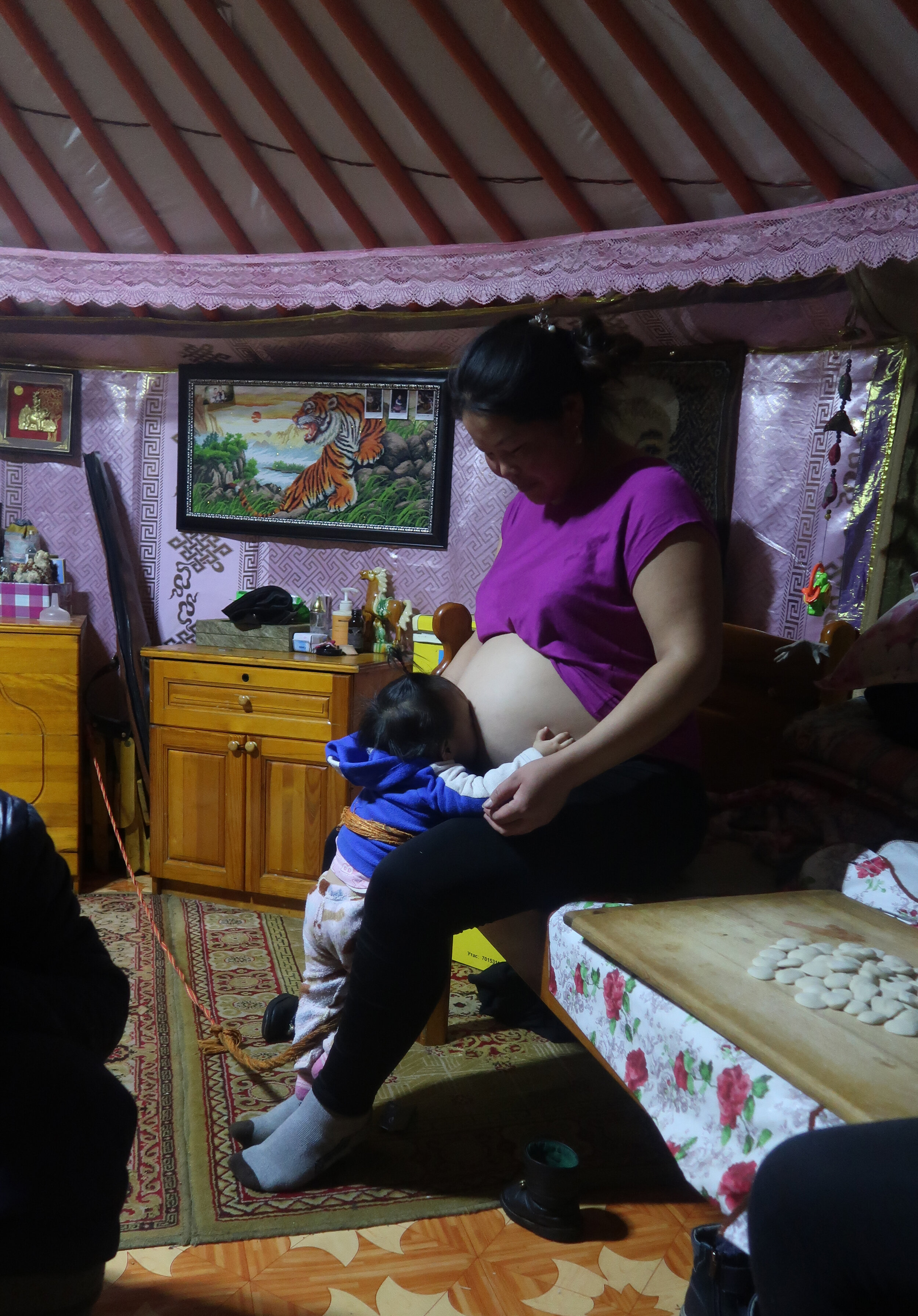Ger District Insights
Monthly Household Income
Based on the interviews conducted, salaries varied heavily depending on the season. 16 out of 18 of the families interviewed have incomes that rely on seasonal jobs, where “work is scarce in the winter time due to the lack of construction projects” - when heating load and energy consumption of homes are at their the highest. The range of salary included a minimum salary was 216, 000 MNT (an elderly person living alone off of welfare), the mean salary was of 1, 016, 824 MNT, and the maximum salary was of 1, 950, 000 MNT (a household where both parents worked full-time jobs).
Monthly Electrical Bill
Based on the interviews conducted, the average for the monthly electric bill was 20,620 MNT per month - excluding the 3 out of the 18 families who used an electrical floor mat for supplemental heating (families 4,5, and 13). One of these three families utilized a hybrid heating system meaning an electric floor mat and a stove. Interestingly, all families split an electrical line, and measured individual usage based on a electricity meter. The family to whom the main electrical line belonged would receive a text message from the billing company at the end of the month, families who were splitting from the mainline would asses how much they used based on their electrical meter, pay the original family, who would then pay the full sum for the monthly bill through text message.
The range of electrical bill included a minimum of 10, 000 MNT (a 4 khana ger, with a single elderly person living alone), the mean electrical bill of 37,375 MNT (on average a 5 khana ger, with household o 4 to 5 family members), and the maximum electrical bill of 120,000 MNT (often a heating system tested for a period of time by households, but unless the combined salary is significantly higher than average, most families we were told find it hard to maintain as a long term alternative heating system).
As the grid in the Ger Areas is currently overused because there are not enough power stations in Ulaanbaatar to support the number of households in the Ger Areas, this causes extremely low flows of electricity during peak ours - between 7-9am and 5-8pm when families are preparing to leave their homes, or returning home after work or school. As a result, we sought to understand whether it was possible to find alternative ways to enable families in the Ger Areas to access better electrical currents - such as a shared photovoltaic system between multiple Hashas in order to share the cost and maintenance of the photovoltaic system, while providing a better electrical source and reducing the current stress on the electrical grid. Families stated that they would be willing to share a photovoltaic system to reduce costs and help maintenance of the system - which is a positive and important note to keep in mind for future housing development in the Ger Areas.
Coal Usage in Winter (Tons)
Daily Coal Uasage (Kg)
We sought to ask families how much coal they consumed in order to develop a better understanding of coal was being consumed per household, as well as how much energy and pollution could be saved in the long term with the new design.
Figure 8: Dolma putting coal in her stove.
We found that families counted their coal consumption through two approaches: daily in kilos, and seasonal deliveries in tons. On average, most families purchased anywhere from .5 to 2 trucks at the beginning of the extreme heating season (throughout October to early November). Depending on whether or not the family had purchased enough coal for the main heating season (Dec. - Feb.) they would also purchase additional coal through various informal vendors.
Once the truck delivered and dropped off the coal directly in the household’s Hasha, the family would bag the coal into individual plastic bags, then placing those bags into the stove an average of 3-4 times a day.
Families’ estimated their daily consumption between a minimum of 8 kg, a mean of 19.9 kg, and the maximum of 30 kg. Families’ estimated their winter consumption to range between a minimum of 3 tons, a mean of 4.5 tons, and the maximum of 8 tons.
It is important to note that there are many variables that influence the families coal usage. Whether it be the number of family members in the ger, whether or not the ger is occupied during the day time and requiring additional heating in the day time, whether or not the family has additional layers of felt insulation on the Ger( and intern more insulative), and the whether or not the volume of the Ger is smaller(4khana) or bigger(6khana).
These figures therefore enable us to have a better understanding of the scale at which families are consuming coal to heat their homes. For example, when taking the average of the overall tons of coal that is consumed - 4.5 tons - and apply it to the current number of Ger households in the Ger Districts - approximately 104,500 households - there is an average of 470,250 tons of coal burning in from Ger households in Ulaanbaatar - accounting for only 48% of the Ger Area residents. As a result, significant savings could be gained by developing energy efficient gains.
Household Loans
Thirteen out of the eighteen households interviewed had loans. The range of loans per household included a minimum of 1 million MNT, a mean of 5 million MNT, and a max of 14 million MNT .
Existing Loans for Ger District Housholds
Figure 9: Portrait of Dulguun putting on his air pollution mask
Household Grocery & Medical Costs
In order to understand other aspects of family household expenses, we sought to ask families how much they were spending on their monthly grocery costs, as well as how much they were spending on their monthly health costs. We hoped to develop a better understanding of these costs in order to be able to estimate how much excess cash families would have on a monthly basis after spending standard living costs. The estimate behind these excess funds could potentially allow us to understand how to charge family’s mortgage rate.
The range of monthly grocery costs included a minimum of 70, 000 MNT, a mean of 244,000 MNT, and a maximum of 1, 700, 000 MNT.
The range of monthly health costs included a minimum of 40, 000 MNT, a mean of 198,000 MNT, and a maximum of 400, 000 MNT.
Life in the Ger Districts
In order to better understand how families perceived living in the ger districts, we asked them a wide variety of questions about the pros and cons of living in the ger district, as well as what they believed were the pros and cons of living in a ger as well as a baishin were. With this information, we hoped to develop a design that could meet the families ideal needs and preferences.
Figure 10: Tuya cooking in her sister’s Ger
Perceptions regarding Living in a traditional Mongolian Ger:
Families perceived a Ger to better by being:
A lot freer… aren’t living with your neighbors on top of you
Kids run around outside
Land could be valuable someday
Soil could be good for planting vegetables
Easier to park car
The Ger is perceived to be worse by being:
Dirtier
Harder to maintain, changing the skin and letting it breadth 2 times a year is difficult
Managing Coal is a pain
Small and uncomfortable when visitors
More dangerous where kids burn themselves
Getting water is really difficult
Ger can smell bad
Perceptions Regarding Living in a Baishins (Western style home):
The Baishin is perceived to better by being :
Easier to maintain (because you do not have to air out the felt walls twice a year to prevent mold growth, as you would in a ger)
Cleaner (families believe you don’t have to clean the home as much)
More spacious (as the baishin can be built as a larger home, with a non-fixed shape - compared to a ger)
More private (families can build separate rooms for privacy)
Warmer (because of the hard walls and the removal of the toono - which is an open air skylight/oculus at the center of a ger)
Have more daylight (with the ability to have windows inserted in hard walls, instead of simply relying on the toono), and if families can save enough money, they look forward to having plumbing indoors (with an indoor toilet, shower, and sink system, instead of relying on an outhouse that requires one to walk to outdoors, which can be a quite cold walk on a cold winter night).
The baishin is perceived to worse by being:
Perception that a Baishin is a four walled box
Mold growth
No ventilation - smells stay and door has to be opened for air circulation
No bathroom, (families who build baishin themselves don’t install plumbing to save money) smells come from toilet, because bathroom is self made
Foundation has no reinforcement
Most families aren’t aware that Ulaanbaatar is in a Seismic Zone
Figure 11: Bolor and her daughter




